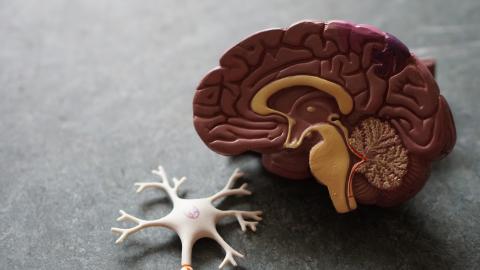Brain study strengthens link between lithium and suicide

Photo by Robina Weermeijer on Unsplash
- Lithium appears essential to brain activity, but how it works remains a mystery.
- A team of researchers analyzed where in the brain lithium tends to accumulate in two healthy controls and one suicide victim.
- The healthy controls had more lithium in their white matter than gray matter.
Lithium is known to students of chemistry as the lightest solid element, to electronics enthusiasts as a fine material to make a battery out of, and to millions of others as an effective medication. It was initially used as a medicine against a variety of conditions, including “brain gout” and “general nervousness,” to some success in the 19thcentury. It was briefly an ingredient in the soda 7 Up, much like how Coca-Cola once included cocaine. In 1948, the government banned the use of lithium in this way.
Ironically, it was a year after these bans took place that the use of lithium got a dose of science. Its safe use in treating a number ofconditions, most notably mania, was demonstrated. It is now widely used to treat bipolar disorder and depression, though it can be toxic in high doses.
Exactly how lithium works in the body isn’t known. How the trace amounts of lithium in our bodies, acquired naturally from sources like food and water, affect us is also poorly studied. A new study published inScientific Reports hopes to fill that gap in the literature. Its findings suggest that lithium is even more important than previously thought, with the body regulating where it is distributed in the brain.
Lithium in the brain of a suicide victim
The researchers used a new technique called neutron-induced coincidence (NIK), which involves shooting neutrons at brain sections and measuring the decay products that form after lithium absorbs a neutron. In this way, they can determine where and how much lithium is in the sample.
This was used to examine a total of 139 samples from the brains of three deceased individuals: the first died a natural death and never took lithium as a medication; the second also never took lithium and died of suicide; and the third took lithium but died a natural death.
The brains of the two subjects who died a natural death contained much more lithium in the white matter than in the gray matter. (Gray matter is involved in higher thought, while white matter is involved in information transfer.) For the suicide victim, there was much less lithium in the white matter compared to the gray matter. The authors concluded that the distribution was “almost diametral to the control collective, where the ratio was well > 1, so that an acute lithium depletion in suicide could be considered.”
It appears, therefore, that lithium distribution is controlled in the brain.
What are the implications?
Lead author Jutta Schöpfer explained:
“Our results are fairly groundbreaking, because we were able for the first time to ascertain the distribution of lithium under physiological conditions. Since we were able to ascertain trace quantities of the element in the brain without first administering medication and because the distribution is so clearly different, we assume that lithium indeed has an important function in the body.”
The authors note that “our results accordingly support the thesis that lithium may be of essential relevance not only in animal, but also in man.” They also mesh well with recent findings suggesting people receiving greater concentrations of lithium in their drinking water are less likely to commit suicide. Additionally, other studies suggest that lithium levels in the water relate to local crime rates and occurrences of neurodegenerative disease.
There is much more to learn about that element in the upper-left corner of the Periodic Table.





